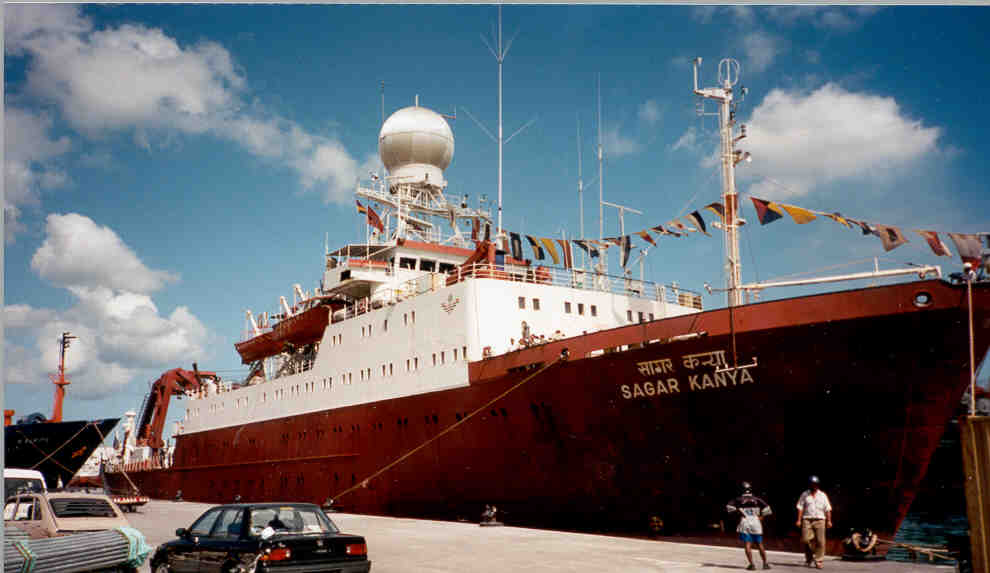Pre-INDOEX
Pre-Indian Ocean Experiment
|
The Indian research vessel Sagar Kanya.
Photo courtesy Mike Strong. (Click image for full resolution)
|
Regional consequences of global warming depend critically on the potentially large cooling effect of another pollutant, known as aerosols. These tiny particles, of about a millionth of a centimeter or smaller in diameter, scatter sunlight back to space and cause a regional cooling effect. These aerosols consisting of sulfates, soot, organic carbon and mineral dust are produced both naturally and by human activities. Results of numerous global warming models suggest that the aerosol cooling is one of the largest, if not the largest, sources of uncertainty in predicting future climate. Still, the complex influence of aerosol cooling on global warming is not clearly understood. This issue will remain a mystery unless field experiments, such as the Indian Ocean Experiment (INDOEX), are undertaken to collect in-situ data on the regional cooling effect of sulfate and other aerosols.
All photos copyright University Corporation for Atmospheric Research unless otherwise noted.
Data Manager:
- EOL Archive NCAR/EOL/DMS
